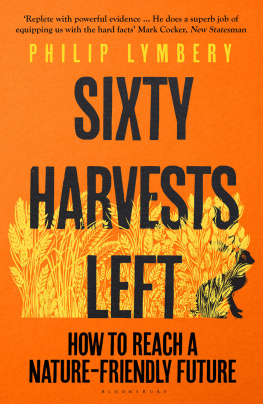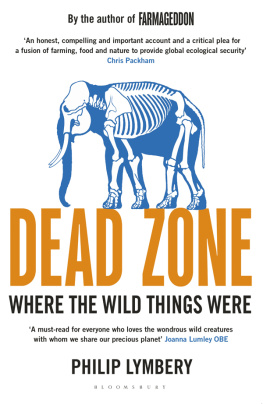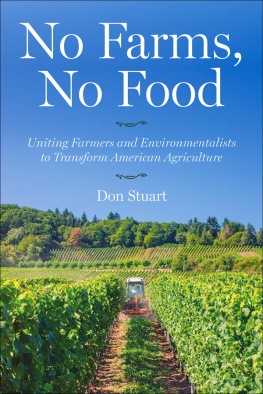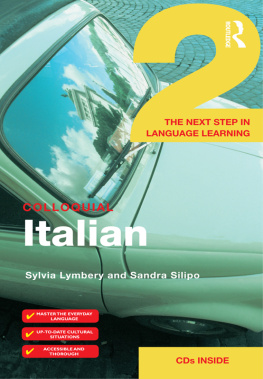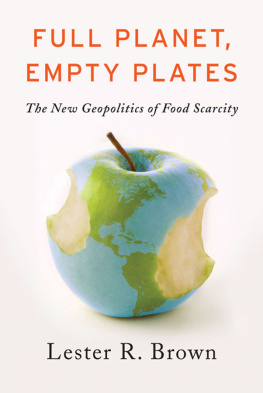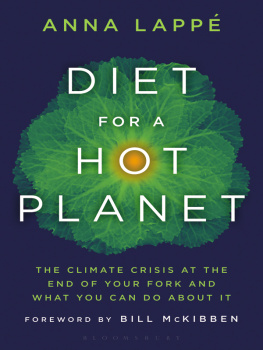
SIXTY HARVESTS LEFT

BLOOMSBURY PUBLISHING
Bloomsbury Publishing Plc
50 Bedford Square, London, WC1B 3DP, UK
29 Earlsfort Terrace, Dublin 2, Ireland
BLOOMSBURY, BLOOMSBURY PUBLISHING and the Diana logo are trademarks of Bloomsbury Publishing Plc
First published in Great Britain 2022
This electronic edition first published in 2022
Copyright Philip Lymbery, 2022
Philip Lymbery has asserted his right under the Copyright, Designs and Patents Act, 1988, to be identified as Author of this work
All rights reserved. No part of this publication may be reproduced or transmitted in any form or by any means, electronic or mechanical, including photocopying, recording, or any information storage or retrieval system, without prior permission in writing from the publishers
Bloomsbury Publishing Plc does not have any control over, or responsibility for, any third-party websites referred to or in this book. All internet addresses given in this book were correct at the time of going to press. The author and publisher regret any inconvenience caused if addresses have changed or sites have ceased to exist, but can accept no responsibility for any such changes
A catalogue record for this book is available from the British Library
ISBN: HB: 978-1-5266-1932-7; TPB: 978-1-5266-1933-4; EBOOK: 978-1-5266-1930-3;
EPDF: 978-1-5266-5469-4
To find out more about our authors and books visit www.bloomsbury.com and sign up for our newsletters
To the memory of Rosemary Marshall: Onwards and upwards
Contents
Palm Sunday, 14 April 1935, and a rose-pink dawn broke over Boise City in Oklahoma. There was a freshness in the air, a feeling of spring, a rare sense of relief from the winds that blew relentlessly over the dusty plains of the American Midwest. The sun shone over simple timber homesteads. The blades of a windmill rested motionless beside a pitched roof dotted with pigeons. The sweet whistles of meadowlarks cut through crystal air. It was an unusual calm before an extraordinary storm.
To locals used to life on the harsh plains, it felt like a new beginning. They opened windows and hung out laundry, spruced up their homes and walked to church in the sun. These were tough people who stoically weathered whatever was thrown at them. Yet nothing could have prepared them for what was about to happen.
Out of nowhere, a boiling black cloud as big as a mountain range rolled towards Boise City at frightening speed. Winds of up to sixty-five miles per hour gathered a wall of dust two hundred miles wide and thousands of feet high, all of which bore down on this exposed community. When it arrived, it hit like a brick. Temperatures plummeted and day turned to night, with visibility reduced to zero. Those caught out in the open crawled to find shelter. Cars came to a standstill. The dust made residents choke as it piled up against their homes. One woman thought of killing her child rather than leaving the baby at the mercy of Armageddon.
It was just like a large rolling pin coming down on you, or a steamroller. I was petrified, recalled Louise Forester Briggs, a young girl when the storm hit.
The 1930s Dust Bowl was rooted in the unintended consequences of decades of decisions by government policymakers, which struck at the very heart of society. American settlers had migrated westward in search of new lives and prosperity, aided by extraordinary government encouragement; prairieland was offered for free to anyone willing to make a go of self-sufficiency on land once dominated by Native Americans and vast herds of wild bison. Thoughts of producing enough for your family soon turned into aspirations of affluence and making a quick buck. Small-scale farming turned into an industry, with new farming techniques that broke up fragile soils and left them exposed to the elements. Grassland was ploughed for crops that were initially so productive that harvests broke all previous records. Farming became geared towards short-term profit. But when markets were flooded and prices slumped, farming methods intensified; after all, if you could no longer make the same money per acre, then surely the answer lay in farming more acres. However, nature bit back and dust storms blew up, carrying away topsoil, burying crops, flattening livelihoods and shortening lives as people got sick from the dust.
Black Sunday, as it became known, saw the worst of the dramatic dusters, the black clouds carrying millions of tons of topsoil that pounded the Great Plains during the 1930s. The states of Colorado, Kansas, New Mexico, Oklahoma and Texas were particularly hard hit. When the dust reached cities like New York and Washington DC, the enormity of the situation struck home: this was no longer a localised problem.
The Dust Bowl era tested settlers to breaking point. Families struggled to feed their children. While many stuck it out, others fled in search of more favourable conditions, sparking the biggest exodus in American history. In echoes of todays global warming debate, there was resistance to change. Efforts to prevent the plains from being blown away were hampered by arguments that the Dust Bowl was a natural event, that misplaced farming techniques werent to blame and that things would naturally come right again.
Solving what has since come to be seen as the worst man-made environmental disaster in American history took great resolve and far-sighted leadership. Everyone involved played their part in turning things around, a remarkable example of humans overcoming an environmental monster unleashed by human hand, against the most impossible odds.
History can forewarn us of future dangers. It can also help us gather the people, the ideas and the will to persevere and overcome. Today, there is a gathering storm of monumental proportions: a climate, nature and health emergency. And at its heart is industrial agriculture.
Scientists have warned that we have until 2030 not only to identify solutions to climate change but to make big strides in implementing them worldwide, if we are to flatten the curve of greenhouse gas emissions sufficiently to stop runaway global heating. Food is a major contributor to emissions, yet it is often overlooked. The livestock sector alone produces more greenhouse gases than the direct emissions of the worlds planes, trains and cars combined.
At the same time, pollinating insects such as bees that play an essential role in food production are in steep decline. Since 1990, around a quarter of bee species have disappeared, Thats more than two-thirds of the worlds wild mammals, fish, birds, reptiles and amphibians all gone.
Ive written this book during the Covid-19 crisis, which has had a profound societal impact. Emergency lockdown measures imposed across the world and a global death toll surpassing 2 million in the first year alone have demonstrated the fragility of our society.
The common thread in all these challenges is industrial agriculture, where animals are reared in confinement, while crops are grown in huge, prairie-like fields of a single variety using chemical pesticides and artificial fertilisers, at great cost to our health, the environment and animal welfare. Every year, 80 billion chickens, pigs, cows and other farmed animals are produced worldwide, with two-thirds reared using intensive or industrial agriculture, also known as factory farming. Caged chickens have so little space that they are unable to flap their wings. Pigs are kept in narrow crates or crowded pens, unable to nuzzle their snouts in the dirt. And cows stand listlessly in crowded feedlots or indoor dairies instead of grazing in green fields. Fish are also industrially reared, with half of the worlds supply coming from farms. The irony is that we continue to plunder the oceans for fish to feed to these farmed fish, a huge problem as fears mount that overfishing could cause the collapse of wild fish stocks.
Next page
